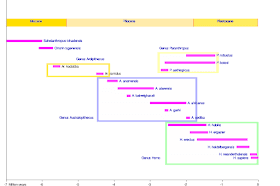POLLUTION, STRESS AND FAULTY FOOD HABITS > FREE RADICALS > OXIDATIVE STRESS > INCREASED CELL DAMAGE.
Mounting scientific evidence may support the important role of free radicals in the development of some diseases.
Mounting scientific evidence may support the important role of free radicals in the development of some diseases.
Free radicals are molecules or atoms
that have at least one unpaired electron which usually increases the
chemical reactivity of the molecule.
Environmental radiation/stress/many other pollutants and
physiological processes in the body cause free radicals to form.
Free
radicals can react with other molecules to cause cell damage or DNA
mutation.
Molecules called antioxidants protect against free radical
damage.
When antioxidants are ineffective, enzymes produced by the body
work to repair free radical damage.
Higher levels of free radicals tend
to cause increased cellular damage. This effect is called oxidative
stress. Oxidative stress may contribute to cardiovascular disease and
cancer.
Chemical compounds found in some foods may decrease the
accumulated effects of oxidative stress, thus helping to prevent
disease.
Free Radicals: Atoms contain a nucleus, and electrons move around the nucleus, usually in pairs. A free radical is any atom or molecule that contains one or more unpaired electrons.
The unpaired electrons alter the chemical reactivity of an atom or molecule, usually making it more reactive than the corresponding non-radical. However, the actual chemical reactivity of radicals varies enormously.
The hydrogen radical ([H.sup.*], the same as a hydrogen atom), which contains 1 proton and 1 electron (therefore unpaired), is the simplest free radical. Free-radical chain reactions are often initiated by removal of [H.sup.*] from other molecules. A superscripted dot is used to denote free radicals.
Free radicals and premature aging: Air pollutants rob skin cells of oxygen and cause free radical production in the skin. This, in combination with UV radiation decreases the production of collagen and elastin, causing the skin to thin and lose elasticity, leading to sagging skin, fine lines, and wrinkles.
Free radicals and diseases: Free radicals are capable of damage biomolecules, provoke immune response, activate oncogens, cause atherogenesis and enhance ageing process. However, in healthy conditions nature has endowed human body with enormous antioxidant potential. Subtle balance exists between free radical generation and antioxidant defence system to cope with oxidative stress by various enzymes and vitamins at cellular level which prevent the occurrence of disease. However, factors tilting the balance in favour of excess free radicals generation lead to widespread oxidative tissue damage and diseases. Therefore, trouble starts when there is an excess of free radicals and the defence mechanism lags behind. Overwhelming production of free radicals in response to exposure to toxic chemicals and ageing may necessitate judicious antioxidant supplement to help alleviate free radical mediated damage.
 |
| tropospheric mean concentrations of (a) O3, (b) OH, (c) H2O2 and (d) the surface Δ17O(SO42-). The measurement locations are shown in (a). |
Free radicals with oily fried foods (through lipid oxidation): Modern industrial environments, lifestyles and poor nutrition contribute heavily to Free Radical production. When the body is low on antioxidants Free Radicals increase. Additionally, unprotected exposure to the sun produces Free Radicals in the skin, mental and emotional stress are key causes of Free Radicals, as is smoking, the taking of drugs of any kind (including alcohol), cooked oils or fats, exposure to petrochemicals, heavy metals, and even excess adrenaline or insulin all take part in Free Radical production in our bodies.
Related blog post links:
http://sciencedoing.blogspot.in/2013/05/dark-oxidants-super-oxides-in-depth-of.htmlhttp://sciencedoing.blogspot.in/2011/12/oxygen-necessary-evil.html
*Note: all pictures thankfully shared from various sources..






































